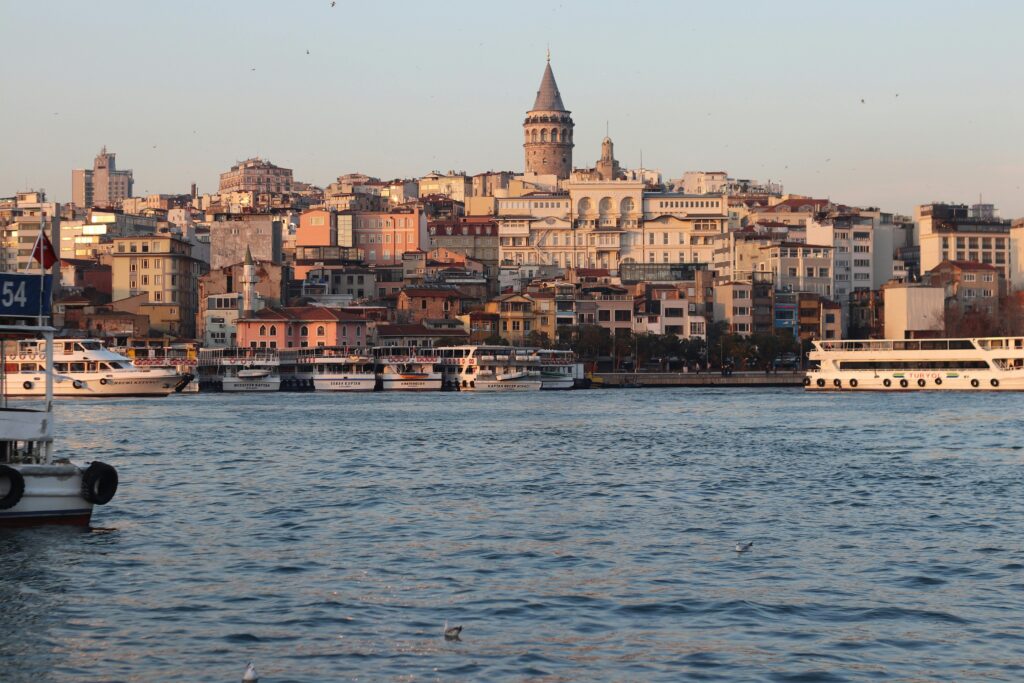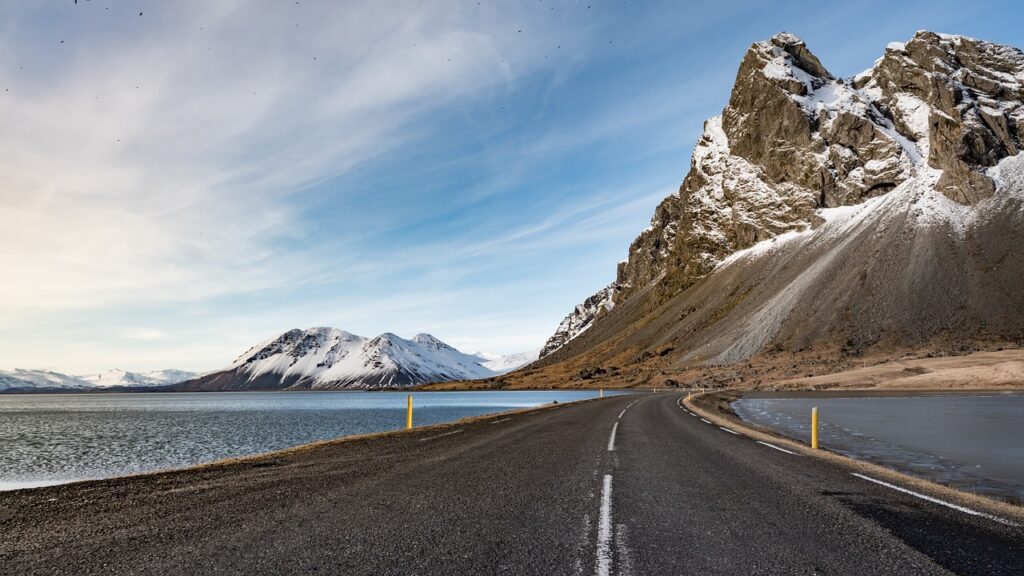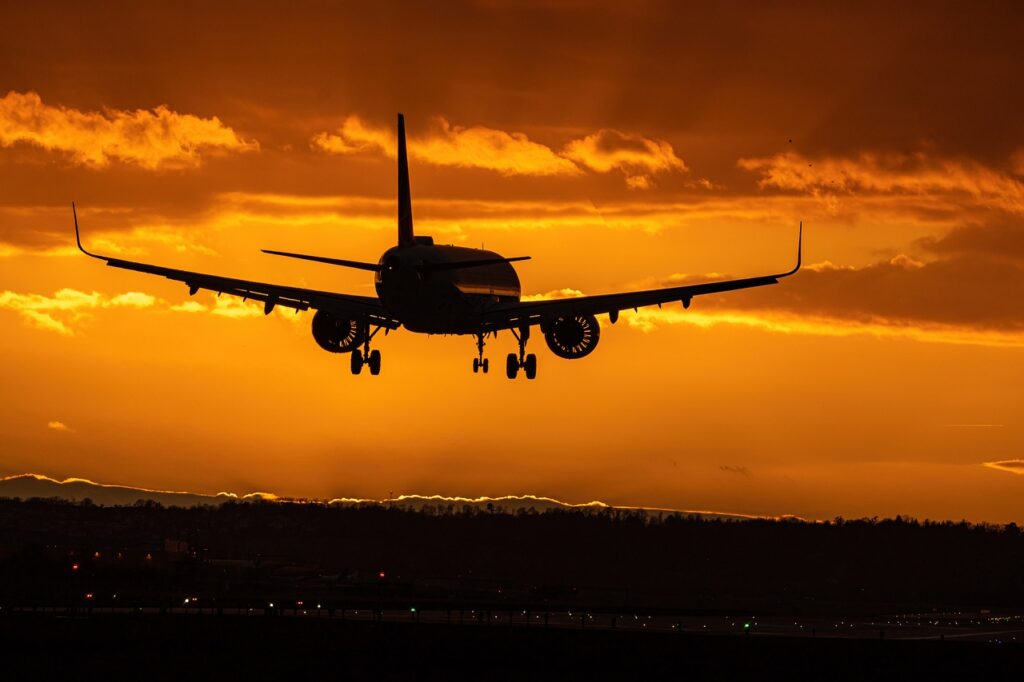“We’re so close to Iran!” I exclaimed excitedly, standing in the shadow of the Ishak Pasha Palace, its stones glowing against the grey slopes of Doğubayazıt. The minaret’s call to prayer over the valley intertwined with the distant hum of lorries. It was one of those moments – unexpectedly cinematic – that seemed to encapsulate the heart of travel: movement, perspective, and stillness all at once. All that was missing was Mount Ararat, which, like a shy celebrity, refused to appear – wrapped stubbornly in grey cloud despite its starring role on our postcards.
Over two weeks, our route across Turkey stretched from the notorious attractions of Istanbul to the ghostly Armenian ruins of the city of Ani, down to the Kurdish highlands, and finally west again to Izmir’s seaside cafés. It was a journey that unfolded not just geographically, but culturally – revealing the richness and complexity of a nation at the nexus of civilisations. I discovered not a singular Turkish identity but a myriad of influences shaped by empires and topography.
Our journey began in Istanbul, where the contrasts of ancient history and modern chaos instantly consume you. The sky was low, and the streets were wet from the morning drizzle as we wandered between Hagia Sophia and the Blue Mosque, both magnificent and bustling with tourists and worshippers. Initially, I’d expected the city to feel foreign; instead, it felt global. Signs in English littered the streets, and people from all walks of life converged: Uzbeks, Chinese, Parisians, Ghanaians, and now two more English tourists trying to navigate the sprawling transport system. We encountered the Armenian Patriarchate and an Ethiopian church tucked between vibrant markets and side-street cafés. These hidden gems epitomised the cross-cultural fabric of the city, where Christian relics and Islamic monuments co-exist. In contrast, the Grand Bazaar proved to be pure sensory overload, with spices, textiles, precious stones, and bargaining shouts overlapping in every direction.
We took the opportunity to visit the Ecumenical Patriarchate of Constantinople, a modest yet deeply significant site tucked away in the old Greek quarter. There, history felt alive – not through grand monuments but quiet resilience. Nearby, the magnificent Church of St. Stephen of the Bulgars stood beside the Golden Horn, a striking example of Eastern European heritage in the Istanbul skyline. In these encounters, Istanbul revealed itself as a city of many layers, resting at the meeting point of East and West. We wandered along the waterfront, listened to fishermen shout over the traffic, and navigated the city’s bustling alleyways lined with stalls and fabric shops. Istanbul’s constant energy makes even aimless wandering feel purposeful. Each neighbourhood introduced a new tone – from the ornate domes of Süleymaniye to the faded grandeur of Topkapı Palace.
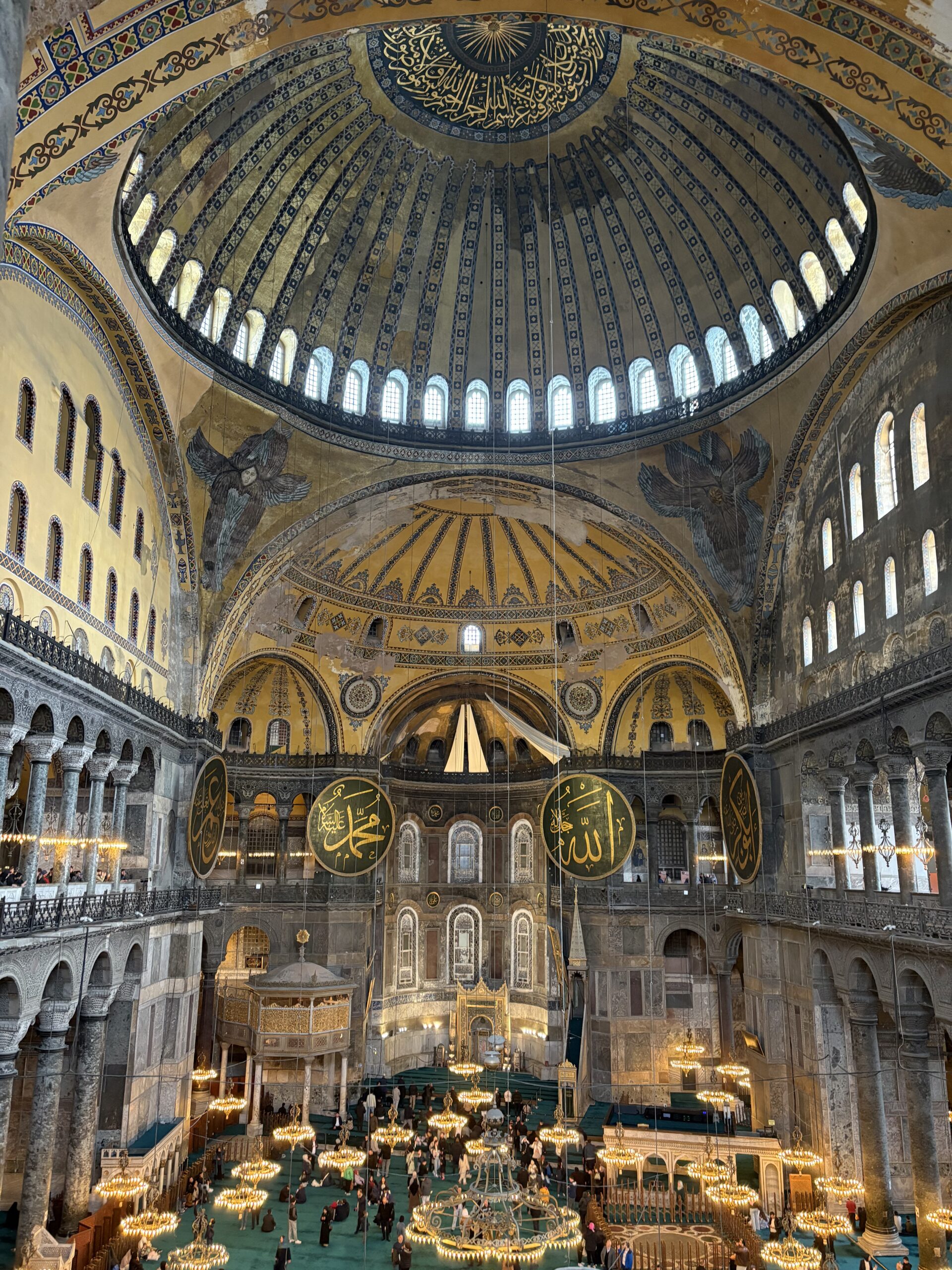
Hagia Sophia Grand Mosque, Istanbul
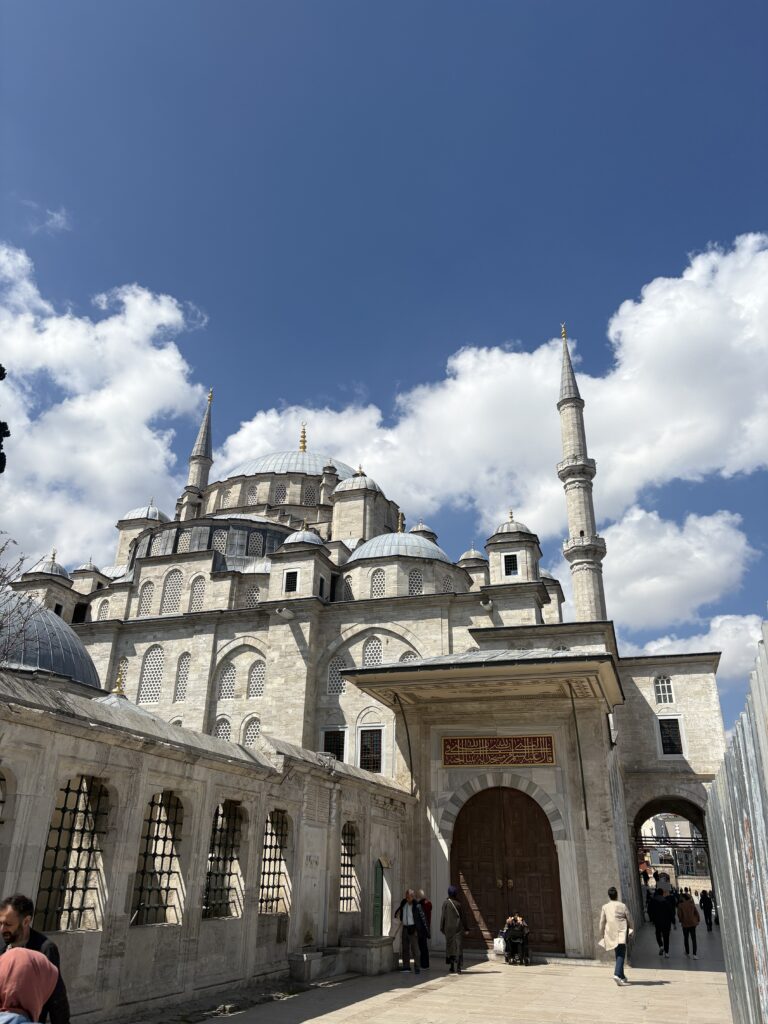
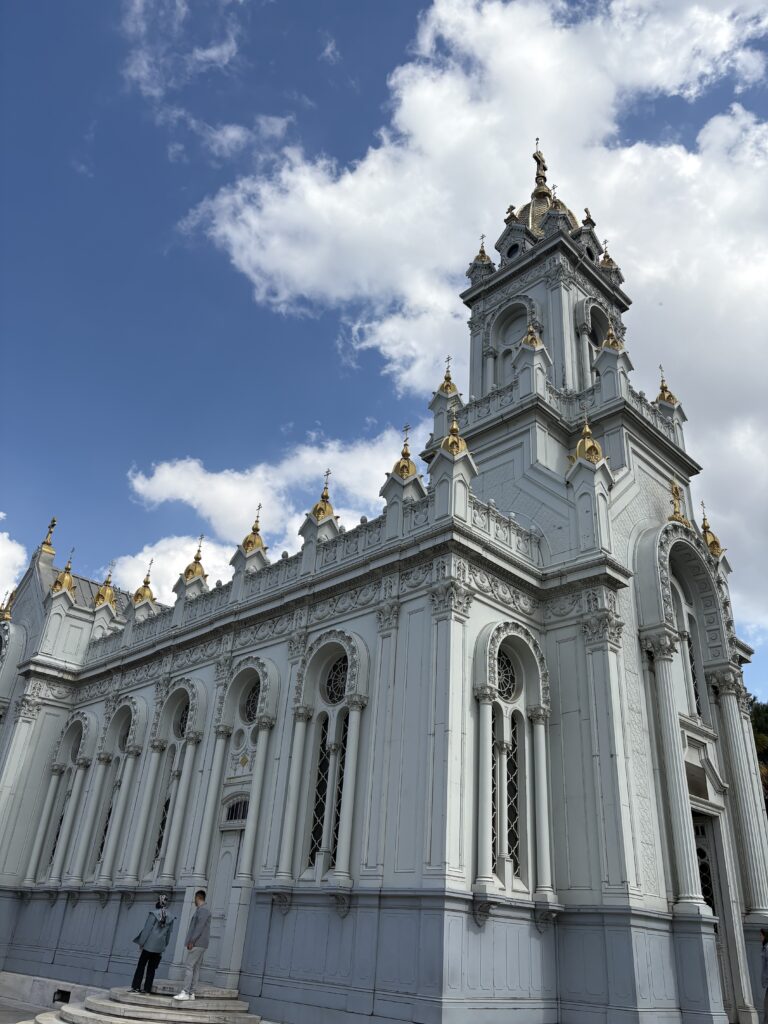
Church of St. Stephen of the Bulgars, Istanbul
Whilst Istanbul functions as Turkey’s outward-facing, cosmopolitan centre, Ankara is where Turkey begins to look inward. We arrived late at night and awoke to a city that felt entirely different. English had suddenly vanished from the street signs and menus, and the hum of tourist chatter became a fleeting memory. The capital’s streets were quieter, cleaner, and distinctly more reserved. Here, Turkish identity felt distilled. We visited Anıtkabir (the monumental mausoleum of Mustafa Kemal Atatürk) and the Museum of Anatolian Civilisations, where ancient artefacts told stories of Hittites, Phrygians, and early Turkic tribes. It became clear how nationalism in Turkey is not only a product of modern politics but of millennia of ancient civilisations.
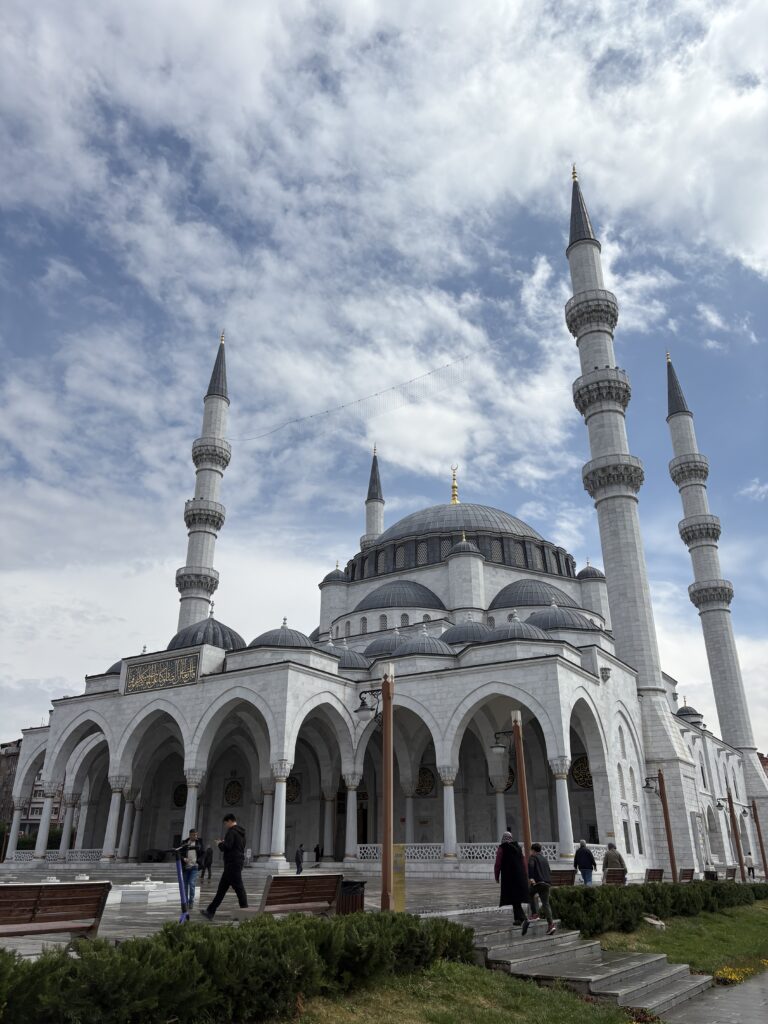
Kocatepe Mosque, Ankara
From Ankara, we boarded a short flight to Erzurum, where everything shifted once more. Life moved at a gentler pace, and a quiet conservatism settled over the streets. Headscarves became more common, and the city carried a sense of devotion. A Kurdish carpet seller invited us into his shop. We expected a sales pitch, but instead, we were met with warm Turkish tea as he explained the symbolism in his patterns and told us stories of Kurdish history. Little did we know that this was to become a recurring theme throughout the eastern provinces: hospitality that was sincere, not strategic.
We also visited the impressive Erzurum castle and the twin minaret madrasa – Çifte Minareli Medrese – a hauntingly beautiful 13th-century structure in partial ruin. Wandering through its stone interior, it is easy to imagine the scholars who once debated within its halls. We climbed the city’s ancient fortress, listened to the late call to prayer across the rooftops, and marvelled at how faith here felt much more rooted in the everyday life of the city’s inhabitants.
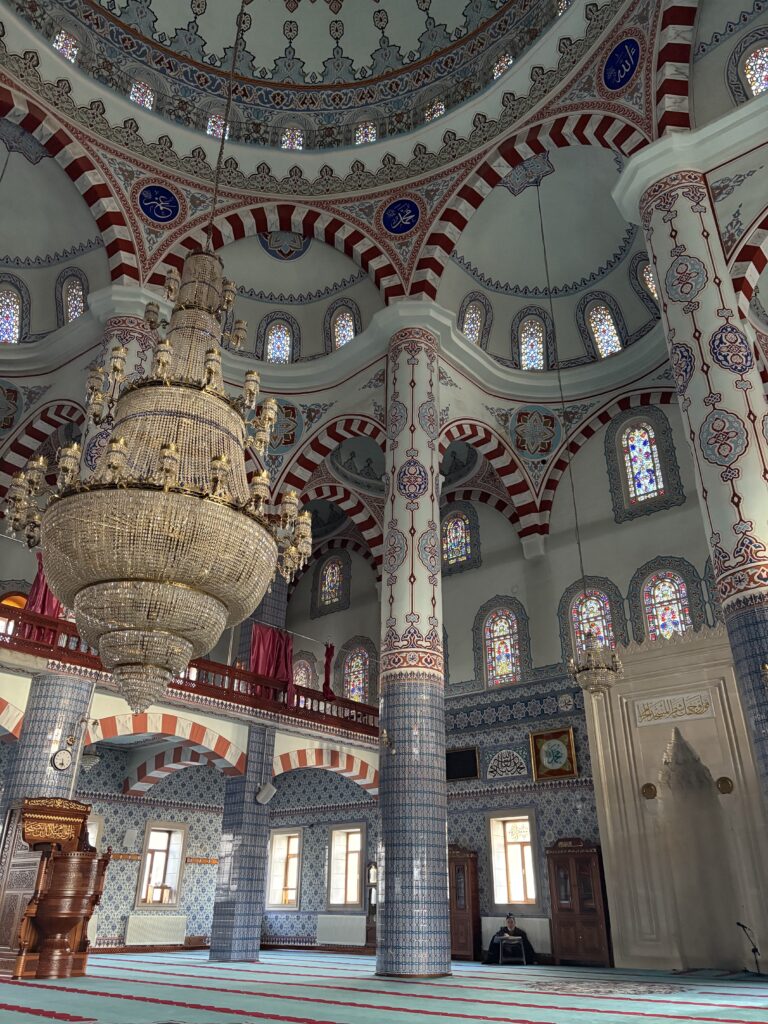
Mehmet Zahid Kotku Mosque, Erzurum
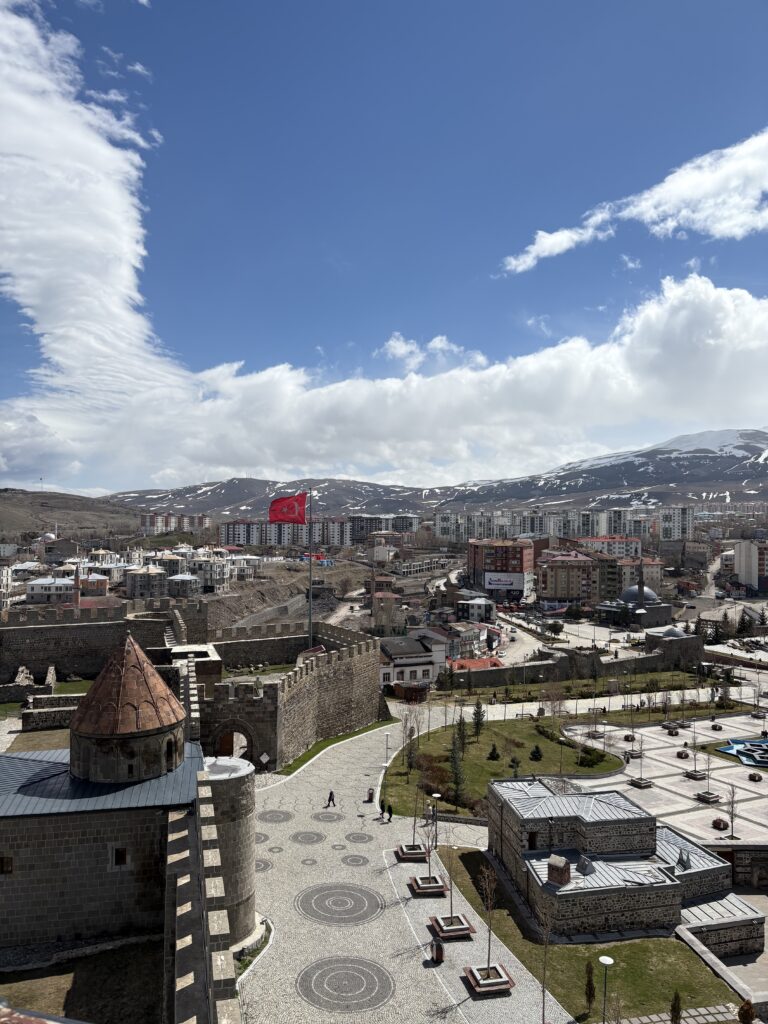
Erzurum Castle
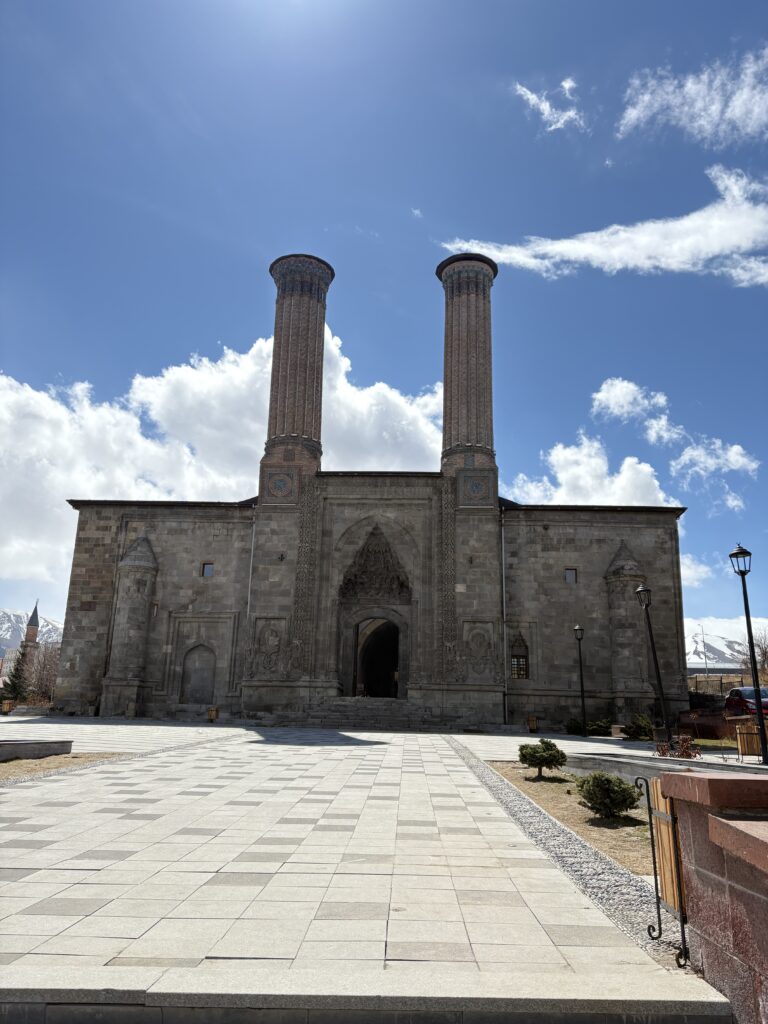
Çifte Minareli Medrese, Erzurum
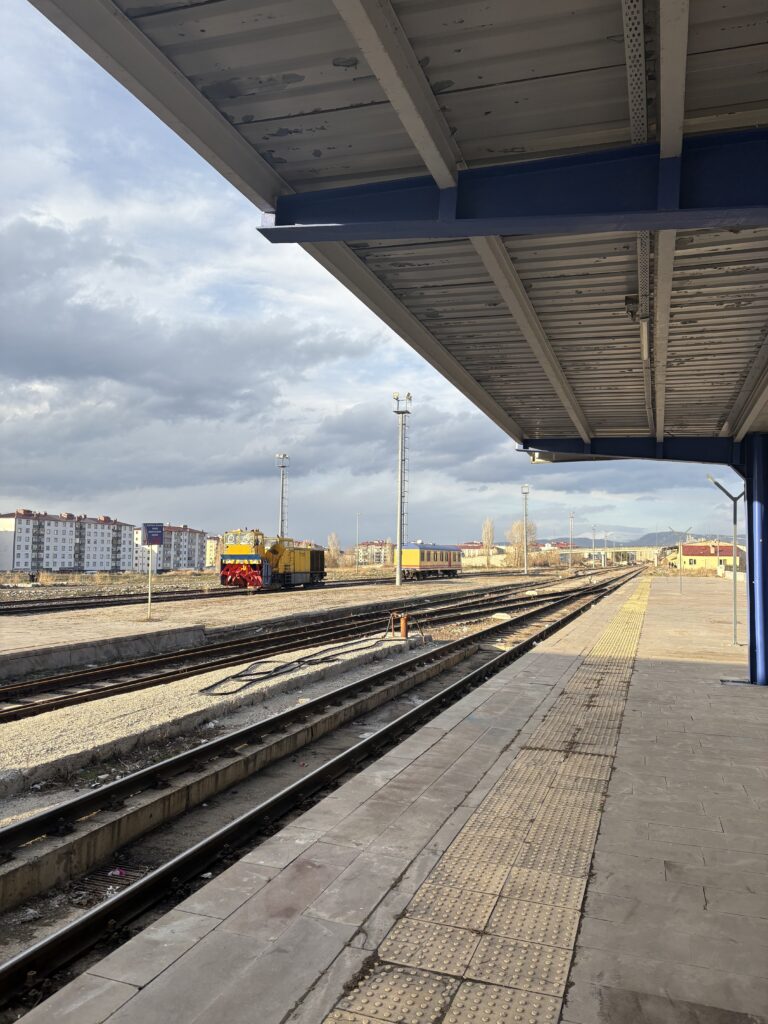
Erzurum Train Station
We took a train at dusk bound for Kars – or at least, that was our intention. With no announcement system to warn us of the situation, the train eventually rumbled into the station two hours behind schedule – a slightly frustrating reminder that time in this region often moves to its own rhythm! In Kars, we were shown around the Central Mosque by its caretaker, who served us tea in the Imam’s office and shared stories in his broken English. Kars felt like a city suspended between Soviet severity and Ottoman grace. Its stone buildings were grey and imposing yet softened by colourful modern shop fronts and elaborate mosques.
However, it was the nearby ruins of Ani that disturbed us most. Once the thriving capital of ancient Armenia, Ani now lies deserted on the Turkish-Armenian border, watched over by a towering 100ft Turkish flag. Across the ravine lies Armenia, visible but unreachable. The silence of the site speaks volumes about history, politics, and unresolved trauma. Ani’s empty churches, city walls, and collapsed bridges over the Arpaçay River tell of a city once at the centre of trade and culture. But they also whisper of erasure – of memory repressed and history contested. It was a haunting but necessary visit.
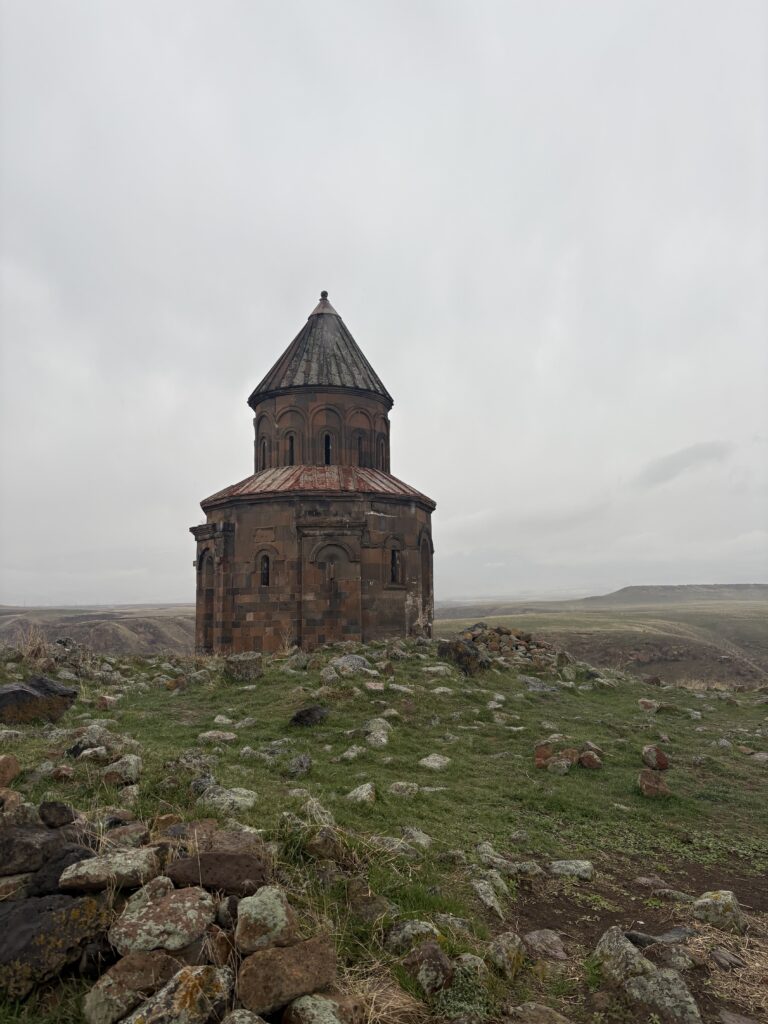
Church ruins in the ancient city of Ani
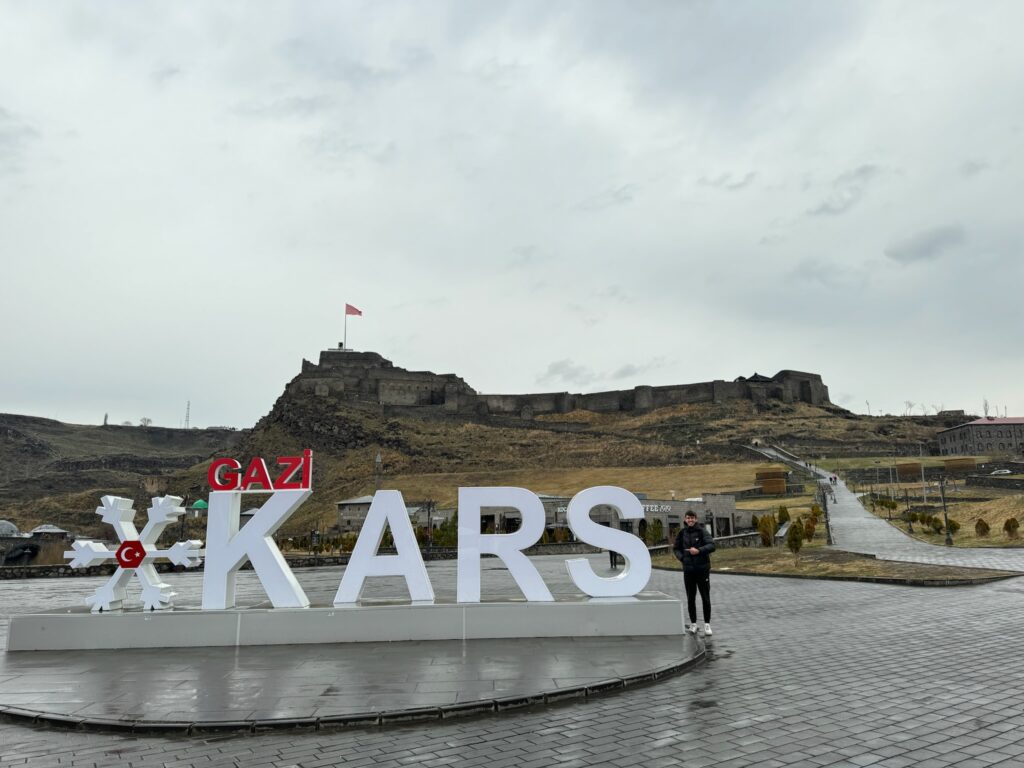
Kars Citadel
Then came Doğubayazıt, which almost felt like another country entirely. The people appeared visibly more Persian, and the tempo of life was slower and older. The architecture, dusty roads, and mixture of modernity and decay reminded me of videos I’d seen of the border towns in Iraq and Syria. The Ishak Pasha Palace stood like a sentinel above the valley, with its blend of Ottoman, Persian, and Armenian styles on display. Despite the cloud obscuring Mount Ararat, the feeling of proximity – both literal and historical – to Iran was striking.
Even our brief stop in Iğdır, a city many skip over, offered a unique feel. Between concrete apartment blocks and tea houses, we noticed a different demographic again – a blend of ethnic Azeris and Kurds, faces and voices shifting with the borders of empires. It was another reminder of how nationhood in this region is constantly negotiated, not only politically but linguistically and culturally.
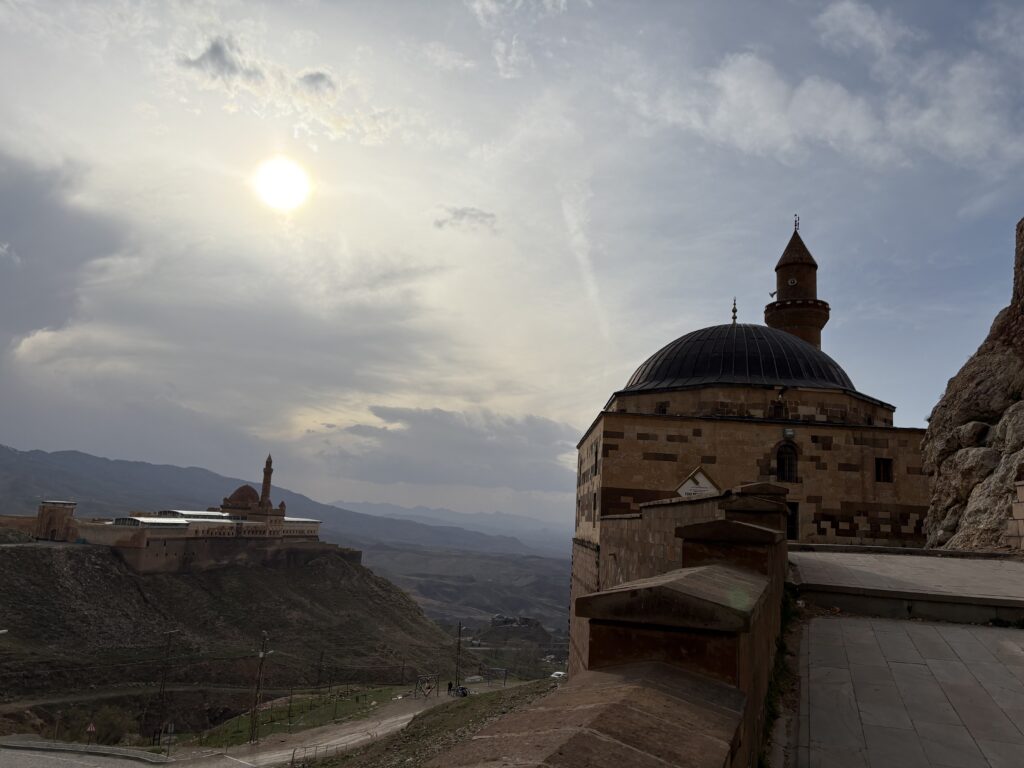
Ishak Pasha Palace and Old Mosque, Doğubayazıt
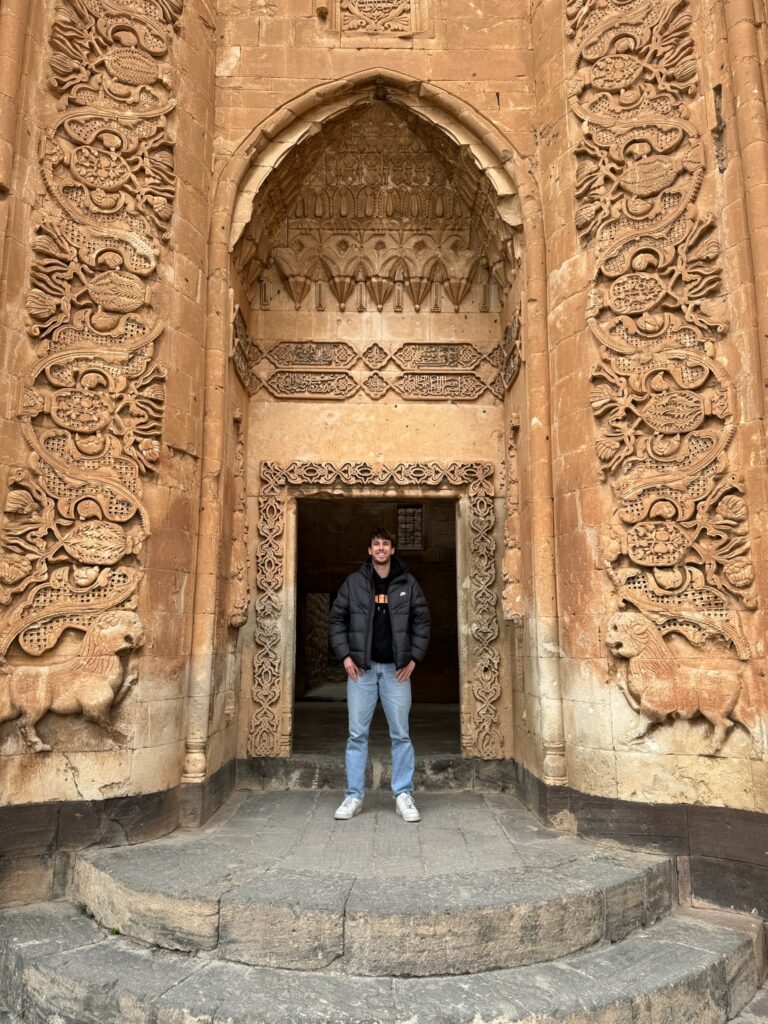
Ishak Pasha Palace, Doğubayazıt
From Iğdır, we flew west again, this time to Izmir – a coastal city with a distinctive Mediterranean feel. Here, we met a welcoming group of students from Kazakhstan who were studying abroad at a university in the city. On our second evening, we had dinner with our newfound friends in a part of town that we otherwise wouldn’t have explored. Their hospitality, offered while residing outside their country of origin, exemplified a compelling example of the capacity for human kindness.
We explored Izmir’s historic sites: the remnants of ancient Smyrna, the vibrant Kemeraltı Market, and the serene courtyards of Hisar Mosque. We also saw the Saat Kulesi – the elegant clock tower that has grown to become a symbol of the city. We watched fishermen cast lines from the waterfront, where there was a gentleness that contrasted sharply with the more intense pace of Istanbul and the austere solemnity of the East.
We ended our journey in Ephesus, walking through what remains of one of the world’s most impressive ancient cities. The Library of Celsus (very much surrounded by tourists!) stood proud in the morning light, its marble glowing against the rising sun. In nearby Selçuk, the Basilica of St John and the Temple of Artemis whispered of empires past.
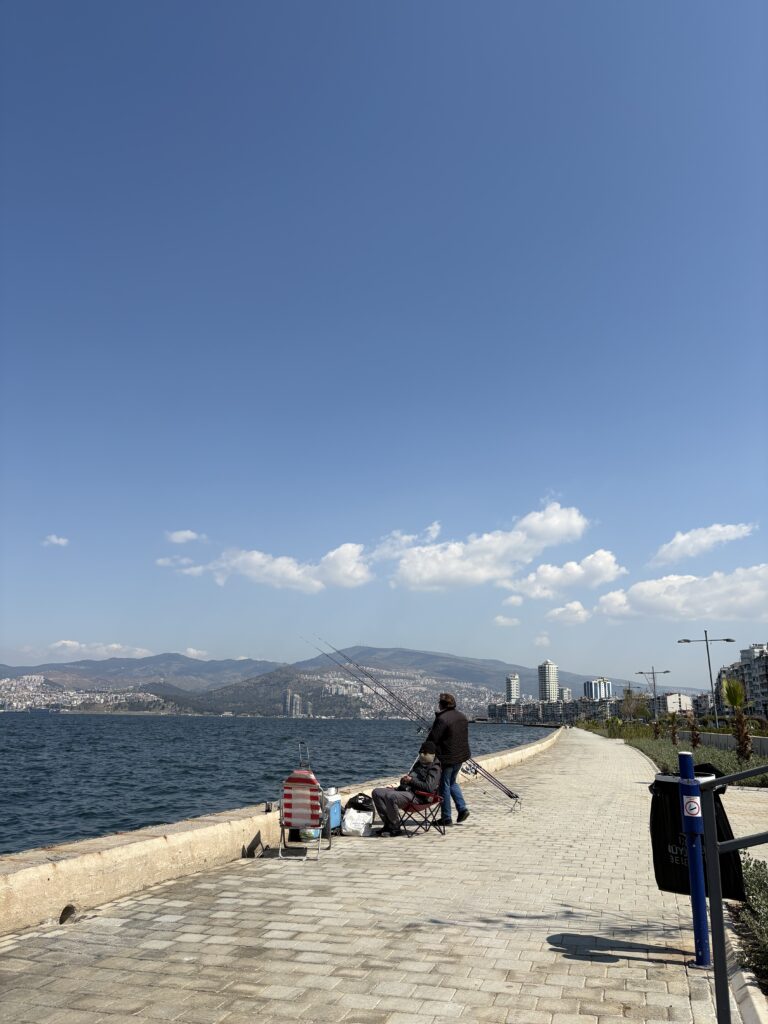
Fishermen on Izmir’s waterfront
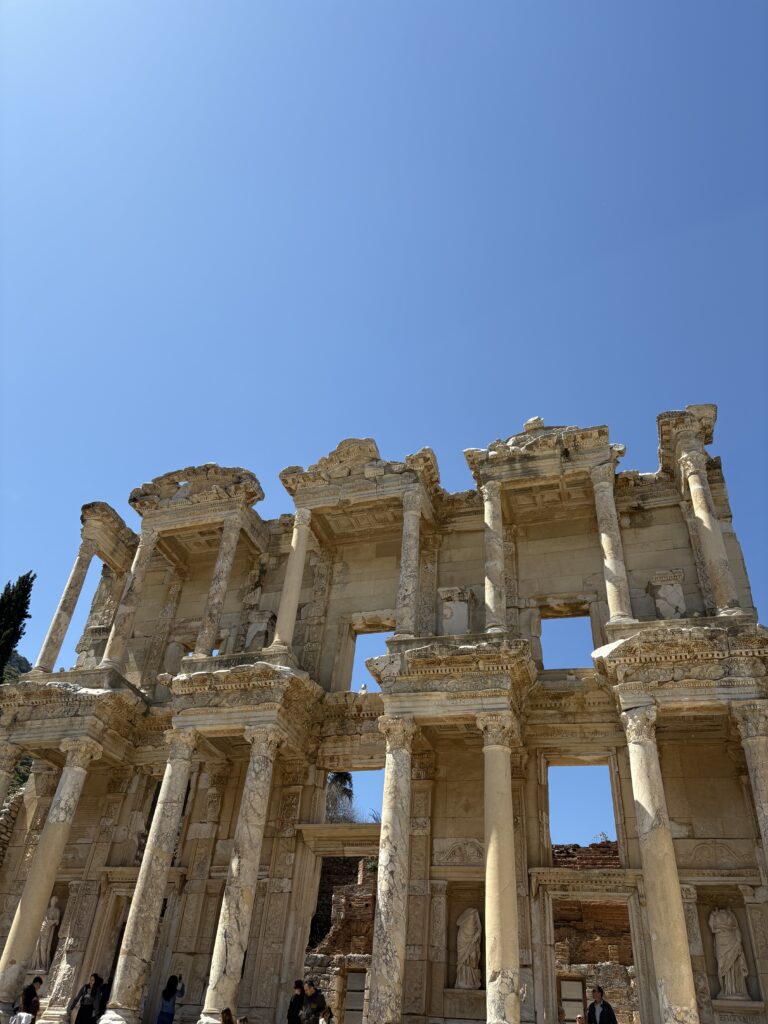
Library of Celsus, Ephesus
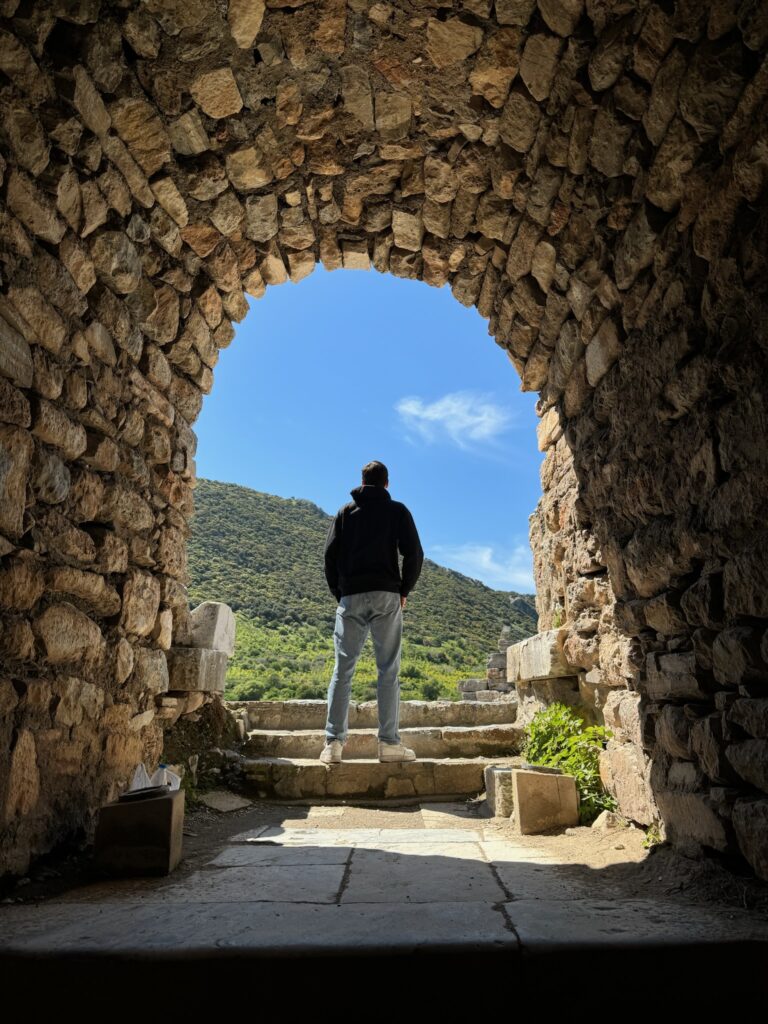
Ancient Ruins of Ephesus
As a geography student, this trip offered more than just striking landscapes. It provided a unique opportunity to see how identity is shaped by terrain, demonstrating how religion and language take root differently across regions. Turkey is not a singular entity, but a country of contrasts: secular and devout, European and Middle Eastern. Travelling through this wonderful country significantly challenged many of my pre-conceived notions. While the journey posed practical challenges, including delayed public transport and often indecipherable signage, these obstacles provided insight into the rhythms and realities of everyday life in each region. This journey reshaped how I think about geopolitics and the ways geography operates in (and sometimes inhibits) daily life. It reinforced that culture is fluid and that understanding a place requires much more than brief observation.
What remains most vividly from this journey are not the major landmarks or political headlines, but the often-overlooked details – a shared cup of tea with a stranger, or the eerie silence looking out from Ani at the Armenian military outposts. This exploration of Turkey deepened my understanding of cultural and spatial complexity, reinforcing the idea that meaning is often embedded in the ordinary rather than the exceptional. As Sir Wilfred Thesiger observed, “The harder the life, the finer the person” – a sentiment that resonated strongly throughout this journey, particularly in the quieter encounters that revealed the resilience and generosity of those living in these often overlooked regions.

